Sculpture: China; Throne: Central Tibet
Sculpture: 1403-1424; Throne: ca. 13th century
This is the gesture of the Buddha calling the earth to witness his awakening.
Sculpture: China; Throne: Central Tibet
Sculpture: 1403-1424; Throne: ca. 13th century
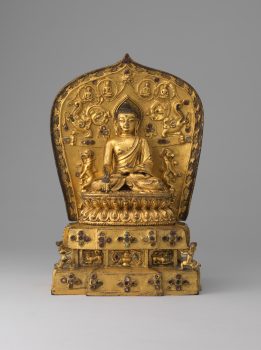
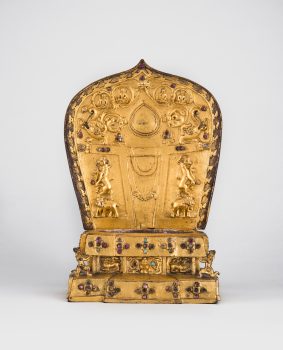
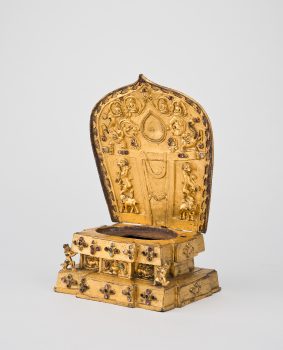
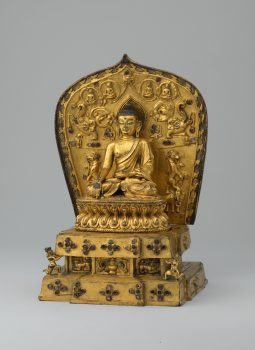
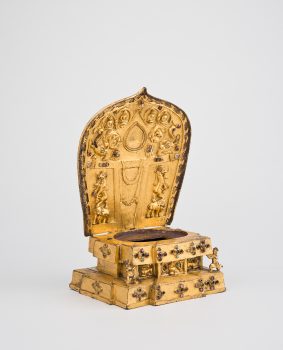
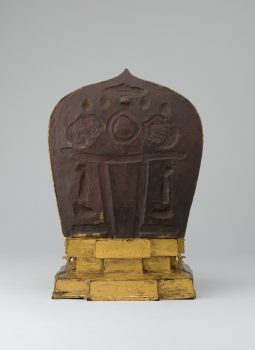
This sculpture was produced in the famous Chinese Ming court workshops of the Yongle emperor (reigned 1403–1424), indicated by the reign mark inscribed on the top front of the lotus throne. These workshops continued the practice of producing Tibetan art established under Mongol rule in the thirteenth and fourteenth centuries. Yongle bronzes are famous for their high polish, strong Nepalese aesthetic, rich warm gilt surfaces, and exquisite attention to detail.The throne base and throne back are not original to this sculpture. They date much earlier (ca 13th century) and relate to the Drigung Kagyu tradition. Behind each of the main figure’s shoulders appear prominent three-jewel decorations, a common Drigung Kagyu motif.
A contemplative practice in which a person uses concentration and visualization to achieve aims such as transforming the mind and generating feelings of compassion. Techniques include focusing on breathing or visualizing oneself as a deity.
The functioning of cause and effect across time. Buddhists believe that everything we experience is the result of past actions, and everything we initiate has future consequences. Karma encourages actions to bring about positive outcomes and a better future.
A state of “waking up” from illusion and seeing the true nature of reality. Buddha Shakyamuni attained enlightenment while meditating under the bodhi tree. Buddhist teaching explains that the accumulation of merit and wisdom are essential for achieving enlightenment, also known as awakening.
An awakened being who understands the true nature of reality and is free from the cycle of birth, death, and rebirth. While there are many buddhas, Siddhartha Gautama is the historical Buddha, whose teachings became the foundation of Buddhism.
Although Tibetan Buddhism was not practiced broadly in China, the imperial centers, such as Beijing and Mount Wutai, emerged as hubs of Tibetan Buddhist cultural production. The emperors of the Mongol Yuan (1271–1368), Chinese Ming (1368–1644), and Manchu Qing (1644–1911) dynasties harnessed Tibetan Buddhist ideas to consolidate their power.
Today, Tibetans primarily inhabit the Tibetan Plateau, situated between the Himalayan mountain range and the Indian subcontinent to the west, Chinese cultural regions to the east, and Mongolian cultural regions to the northeast. During the 7th to 9th century, Tibetan rulers expanded their empire across Central Asia, and established Buddhism as the state religion.
Get the latest news and stories from the Rubin, plus occasional information on how to support our work.